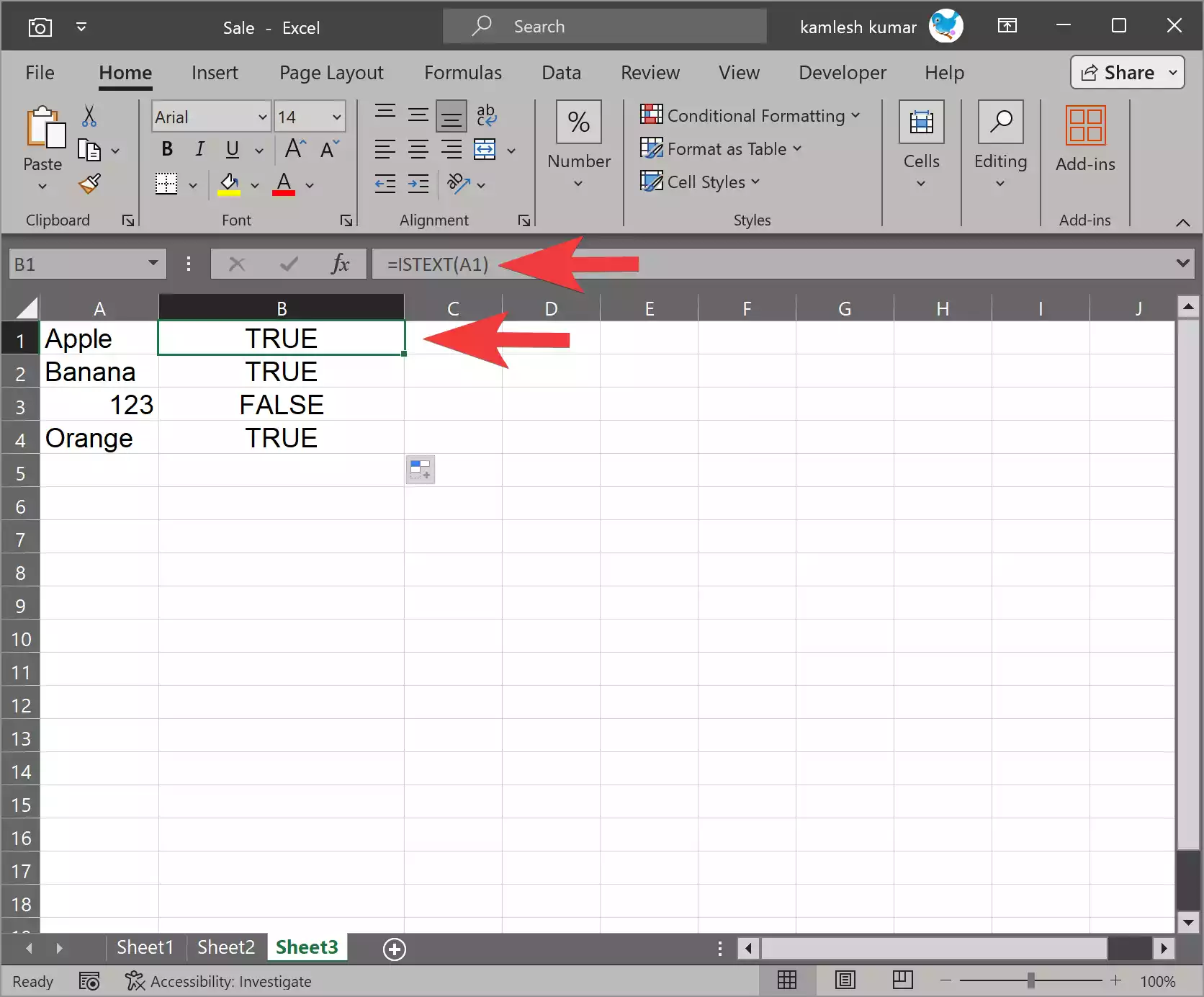Microsoft Excel is a powerful spreadsheet software that offers a wide range of functions to help users manipulate and analyze their data. One such function is `ISTEXT,` which is used to determine whether a cell contains text. This function can be a valuable tool when working with large datasets or when you need to verify the type of data in a particular cell. In this gearupwindows article, we will explore the `ISTEXT` function in Excel, how it works, and how to use it effectively.
Understanding the ISTEXT Function
The `ISTEXT` function is a logical function in Excel, and its primary purpose is to check if a given cell contains text. It returns a Boolean value, which means it will provide either “TRUE” or “FALSE” as the output. When `ISTEXT` is used in a formula, it evaluates the content of a cell and returns “TRUE” if the content is text and “FALSE” if it is not.
The syntax for the `ISTEXT` function is simple:-
=ISTEXT(value)
– `value` is the cell reference or the value you want to test for being text.
How to Use the ISTEXT Function in Excel?
Let’s walk through a step-by-step guide on how to use the `ISTEXT` function in Excel:-
Step 1. Start by opening Microsoft Excel and either creating a new worksheet or selecting an existing one where you want to use the `ISTEXT` function.
Step 2. Choose the cell where you want to display the result of the `ISTEXT` function. This is where Excel will tell you whether the selected cell contains text or not.
Step 3. In the selected cell, enter the `ISTEXT` formula. For example, if you want to check if cell A1 contains text, you would enter the following formula:-
=ISTEXT(A1)

Step 4. After entering the formula, press the “Enter” key. Excel will evaluate the content of cell A1 and display “TRUE” if it contains text or “FALSE” if it does not.
Note: Suppose you have a dataset where some cells contain mixed data (text and numbers), and you want to extract only the text portions. You can use ISTEXT to identify cells with text. Excel will evaluate the content of cell and display “TRUE” if it contains text (with numbers) or “FALSE” if it does not.
Step 5. The cell where you entered the formula will now display either “TRUE” or “FALSE” based on the content of cell A1. “TRUE” indicates that the cell contains text, while “FALSE” means that it does not.
Step 6. If you need to check multiple cells for text, you can copy the cell containing the `ISTEXT` formula and paste it into other cells. Excel will automatically adjust the cell references, making it easy to check multiple cells at once.
Practical Examples of ISTEXT
The `ISTEXT` function can be useful in various scenarios. Here are a few examples:-
1. Data Validation: Use `ISTEXT` to verify data entered into a cell. For instance, you can set up conditional formatting to highlight cells containing non-text data.
2. Text Extraction: In data cleaning tasks, you can use `ISTEXT` to identify cells containing text and then apply text extraction functions or manipulate the text data as needed.
3. Reporting: When creating reports or summaries, you can use `ISTEXT` to count the number of text entries in a range.
4. Conditional Formulas: Combine `ISTEXT` with other logical functions like `IF` to create conditional formulas that perform specific actions based on whether a cell contains text.
Common Mistakes with ISTEXT
While the `ISTEXT` function is straightforward, here are some common mistakes to avoid:-
1. Incorrect Cell References: Make sure you reference the correct cell or range. Using the wrong cell reference will lead to inaccurate results.
2. Case Sensitivity: Excel’s `ISTEXT` function is not case-sensitive. It treats both uppercase and lowercase text as text.
3. Text with Spaces: `ISTEXT` considers cells with spaces as text. If you want to check for visible text, you may need to use additional functions like `TRIM.`
4. Empty Cells: An empty cell will return “FALSE” when using `ISTEXT.` If you want to check for both text and non-empty cells, consider using `AND` or `OR` in combination with `ISTEXT`.
In Conclusion
The `ISTEXT` function in Microsoft Excel is a valuable tool for checking whether a cell contains text. It can be used in a wide range of applications, from data validation to data cleaning and reporting. By understanding how to use `ISTEXT` effectively, you can improve the accuracy and reliability of your Excel spreadsheets and streamline your data analysis tasks.